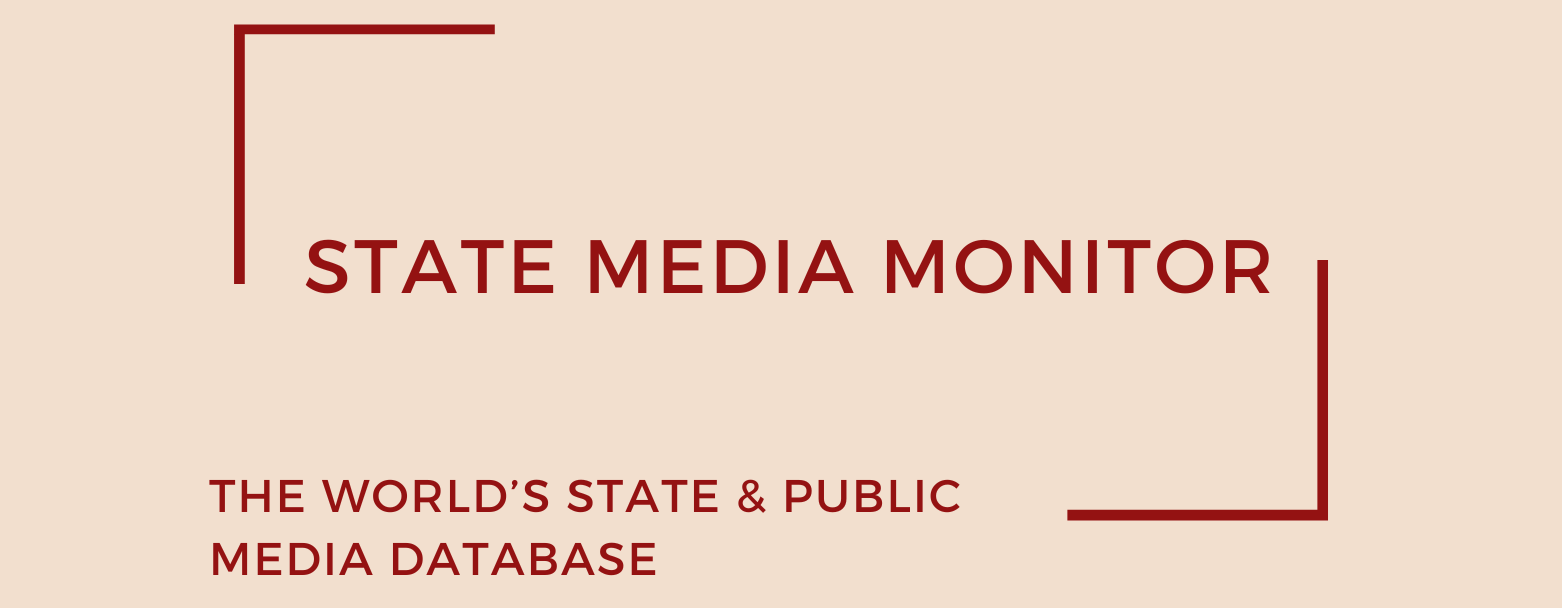Radio Television Afghanistan (RTA)
Radio Television Afghanistan (RTA) is Afghanistan’s national public broadcaster, operating both radio and television services across the country. It has long been the primary vehicle for disseminating state-sanctioned news and entertainment.
Media assets
Television: National Television Afghanistan
Radio: Radio Afghanistan
State Media Matrix Typology
Ownership and governance
RTA is a state-owned institution, overseen by the RTA Commission—its principal governing body—whose members are appointed by the High Media Council. According to research conducted by the Media and Journalism Research Center (MJRC), the Council historically included representatives from the executive, legislative, and judicial branches of government, alongside figures from civil society and the media. Despite this pluralistic appearance, real control has consistently rested with the government. RTA is institutionally subordinate to the Ministry of Information and Culture, which exerts considerable influence over its operations.
Following the Taliban’s return to power in August 2021, the structure of RTA’s governance has been effectively dismantled and replaced by direct political control. In 2023, Yousef Ahmadi, formerly a Taliban spokesperson, was appointed as RTA’s Director General, consolidating the regime’s grip over the broadcaster.
Source of funding and budget
The latest available data from 2017 indicated that RTA operated on a government-allocated budget of AFN 404 million (approximately USD 5.9 million), supplemented by around AFN 220 million (USD 3.2 million) in advertising revenue. However, this funding was tightly controlled by the Ministry of Finance, and there have been no public updates on RTA’s financial standing since the Taliban takeover.
Since 2021, RTA has faced acute financial hardship due to both internal budgetary constraints and the broader economic isolation of the Taliban regime. Interviews conducted in 2023 with local journalists confirm that these fiscal pressures have severely hampered the broadcaster’s ability to function independently or sustainably.
Editorial independence
RTA’s editorial autonomy has historically been fragile and repeatedly undermined by government interference. During the republic era, a degree of professional independence was reintroduced under the leadership of Ismail Miakhail, a former BBC journalist whose tenure was seen as a modest step toward editorial integrity.
These gains, however, were swiftly erased after the Taliban seized power. Since then, RTA has become a mouthpiece for the regime. Reports from 2023 and 2024 describe systematic purges of staff, particularly women journalists, alongside instances of intimidation, physical abuse, and censorship. Moreover, the number of female journalists working at the station has dropped dramatically, reflecting broader gender-based restrictions imposed across the country. An estimate from early 2025 places active female journalists at just 600—down sharply from 2,833 in August 2021.
Taliban officials now maintain tight control over all programming, with content increasingly shaped by ideological and religious directives.
Although Afghanistan’s media law nominally enshrines protections for editorial independence, these legal safeguards have become functionally obsolete. There is currently no independent regulatory body or legal mechanism that can credibly enforce or assess RTA’s independence.
July 2025
Citation (cite the article/profile as part of):
Dragomir, M. (2025). State Media Monitor Global Dataset 2025.
Media and Journalism Research Center (MJRC).
Zenodo.
https://doi.org/10.5281/zenodo.17219015
This article/profile is part of the State Media Monitor Global Dataset 2025, a continuously updated dataset published by the Media and Journalism Research Center (MJRC).
